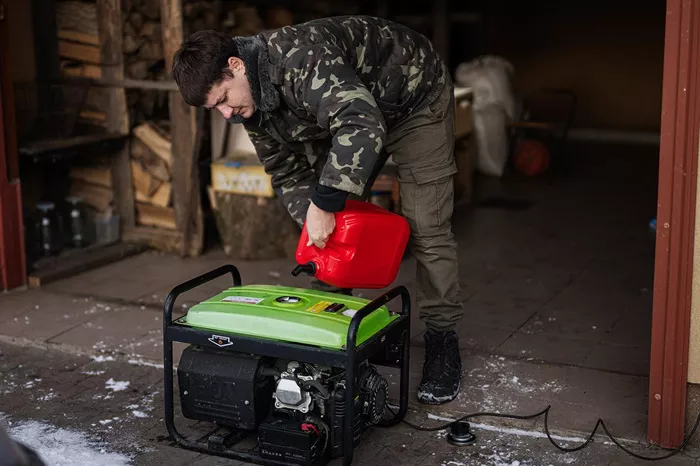If you’ve recently acquired a solar – powered generator for your RV or are considering getting one, understanding how to use it effectively is crucial. This guide will walk you through the steps and considerations for making the most of this sustainable power source on your RV adventures.
Installation & Setup
Mounting the Solar Panels
The first step is installing the solar panels. There are two main options: roof – mounted and portable. Roof – mounted panels offer a more permanent solution. First, clean the roof area where you plan to mount the panels to ensure a secure adhesion. Use appropriate mounting brackets and screws to attach the panels firmly. Make sure the panels are positioned at an angle that maximizes sunlight exposure. For example, if you’re traveling in the northern hemisphere, you might want to face the panels south. Portable solar panels, on the other hand, are more flexible. They can be unfolded and placed in an open area near your RV. Some portable panels come with stands that allow you to adjust the angle easily. Just ensure they are placed in a location where they won’t be tripped over or damaged.
Connecting the Components
Once the solar panels are in place, you need to connect them to the charge controller, battery, and inverter. Start by connecting the solar panels to the charge controller using the appropriate cables. The charge controller regulates the flow of electricity from the panels to the battery, preventing overcharging. Then, connect the charge controller to the battery. If you’re using a lithium – ion battery, make sure the connections are tight and secure, as lithium – ion batteries require proper handling. Finally, connect the battery to the inverter. The inverter converts the direct current (DC) stored in the battery into alternating current (AC) that can power your RV’s appliances.
Monitoring & Maintenance
Checking the Charge Controller
Regularly monitor the charge controller. Most charge controllers have an LCD display that shows important information such as the battery’s state of charge, the voltage from the solar panels, and the charging current. Check this display daily to ensure everything is working correctly. For instance, if the battery’s state of charge is not increasing despite sunlight, it could indicate a problem with the solar panels, the charge controller, or the connections.
Battery Maintenance
If you’re using a lead – acid battery, it requires more maintenance than a lithium – ion battery. Check the electrolyte levels in lead – acid batteries regularly. If the levels are low, add distilled water as needed. Keep the battery terminals clean and free of corrosion. You can use a wire brush to clean the terminals and then apply a thin layer of petroleum jelly to prevent future corrosion. Lithium – ion batteries, while more maintenance – free, still need to be monitored for any signs of swelling or abnormal behavior.
Cleaning the Solar Panels
Over time, solar panels can get dirty. Dirt, dust, and debris can reduce the amount of sunlight they can capture, decreasing their efficiency. Clean the panels regularly, especially if you’re traveling in dusty or dirty environments. Use a soft brush or a clean cloth and water to gently wipe the panels. Avoid using harsh chemicals that could damage the panel surface.
Using the Generator While on the Road
Powering Your RV’s Appliances
Once your solar – powered generator is set up and running, you can start powering your RV’s appliances. First, determine the power requirements of your appliances. Smaller devices like smartphones, tablets, and LED lights require relatively little power and can be easily powered through USB ports or low – voltage DC outlets. Larger appliances such as air conditioners, refrigerators, and microwave ovens need more power. Make sure your solar – powered generator has enough capacity to handle these high – wattage appliances. If you’re using multiple appliances simultaneously, be aware of the total power draw to avoid overloading the system.
Managing Power During Different Conditions
On sunny days, your solar – powered generator should be able to generate plenty of power. However, on cloudy days or at night, the power generation will be reduced. In such cases, you may need to manage your power usage more carefully. For example, you can turn off non – essential appliances like the TV or the electric kettle. Some RVs also have energy – efficient settings on appliances that you can activate to reduce power consumption.
Conclusion
Using a solar – powered generator for your RV can enhance your travel experience by providing a reliable, cost – effective, and environmentally friendly power source. By following the proper installation, monitoring, and usage steps, you can ensure that your generator serves you well on all your adventures. Whether you’re parked in a sunny campsite or exploring a remote area, a solar – powered generator gives you the freedom to power your RV without relying solely on campground hook – ups or noisy gasoline generators. However, it’s important to remember that proper maintenance and power management are key to maximizing the performance and lifespan of your solar – powered generator system.

